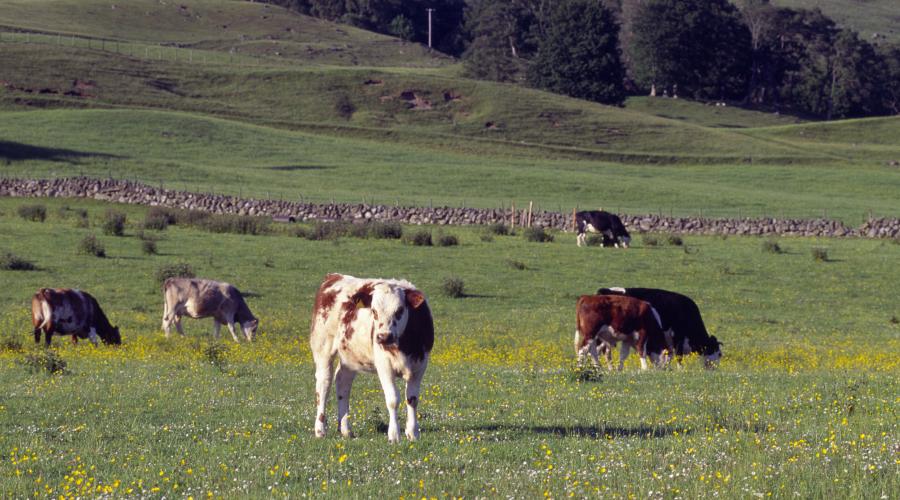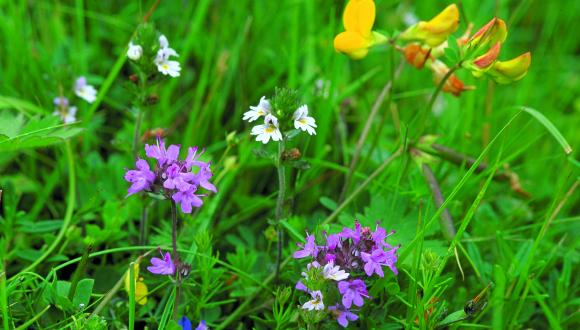
Lowland livestock and dairy farming
Dairy and meat production often involves intensive management, which can be linked to lower biodiversity and higher risks of pollution.
Dairy farming is part of Scotland’s agricultural production. The net number of dairy farms in Scotland has decreased, though cow numbers in 2017 are at their second highest level since 1997. This indicates a shift to larger production units.
Lowland livestock and dairy farms are mostly found in:
- Ayrshire
- Dumfries and Galloway
- the Borders
- Orkney
- Caithness
- parts of Tayside
- parts of Grampian
Such farms have:
- permanent and temporary grasslands
- arable land
- animal housing, forage stores and cattle yards
Dairy and meat production have high energy costs, and temporary grassland sown with ryegrass provides the rich feed needed by livestock. Such intensive management is often linked to lower biodiversity and higher risks of pollution.
Pollution risks include:
- greenhouse gas emissions
- leaching of nitrates into the environment
- erosion from winter grazing
Wildlife and landscape impacts
Arable cropping and species-rich permanent pastures offer opportunities for biodiversity, though these are increasingly rare.
Improved grassland has more limited benefits for wildlife, but can:
- be an important feeding ground for bird species such as curlew, oystercatcher and redshank
- encourage populations of small mammals for owls and birds of prey to feed on
- provide food for several kinds of wild geese (e.g. greylag, barnacle), which have increased greatly in number since the 1990s
Management schemes on Islay and Kintyre limit the feeding areas for geese, and on Tiree and the Uists they help to control the agricultural damage they cause.
Wetlands are also important for wildlife and regulate the flow of water on lowland farms, helping to prevent flooding. Many of these habitats have been drained for agricultural production in the past. But the number of ponds in the lowlands rose from 14,000 to 18,000 between 1990 and 2007.
In lowland farming areas, hedgerows, drystane dykes, small woodlands and shelterbelts can contribute to landscape character.
Find out more
Guidance note: The effects of supplementary feeding on species-rich grasslands




